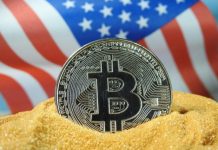
The coronavirus pandemic left many people without jobs, and this created some serious financial insecurity among many households. Whenever people cannot make ends meet, they may be forced to do anything possible, and one of these methods is turning to predatory loans. Most of the people who have been affected by this are low-income people who rarely earn enough money to save from their everyday engagements.
Available research shows that alternative banking or payday lenders are more common in communities that are low-income. According to the researchers, the following information about payday loans was found to be true:
1. Payday lenders have a higher presence in the South.
The southern part of the United States of America is where most of the poor and vulnerable families live. If you look at the number of payday loan providers that operate in this part of the United States, the numbers are staggering. This also holds true in Mississippi and Louisiana, where there is a high number of these payday lenders. And if you get to the specifics, the Southern parts, which are Louisiana and Mississippi have a high concentration of payday loan providers and are mostly inhabited by the blacks, Indians, and other people, who are believed to earn a low income. The median wage in those communities is much lower than in areas that are generally white-dominated. This is why the residents will keep borrowing to bridge their financial shortages between paydays.
2. Payday lenders are mostly in poorer communities than in wealthier ones.
The communities where there is a high average wage have fewer payday lenders as opposed to those whose average wage is lower. This is why fewer payday lenders have operations in the rich suburbs of New York and Washington, but rather target the far-flung areas where people struggle to provide for themselves and for their loved ones with their little income. If you want to know more about where most payday loan lenders operate, check this map. However, it should be understood that the reasons for the existence of these payday lenders in poor suburbs can be attributed to the presence of a business. In those localities, people earn a lower median income than in richer neighborhoods, and this makes a majority of the population borrow from payday lenders.
3. Counties occupied mostly by blacks have more payday lenders.
The top 10 US counties that have a high black population account for up to 20.93 percent of the payday lenders, and this percentage comes down to less than.73 percent in communities that are predominantly white.
4. Wealthy counties have the lowest number of payday lenders per capita.
If you take, for example, Lourdon County, VA., where the average income per household is $139,915 and where there is a population of about half a million people, there are just three payday lenders in operation. This is a clear indication that in the localities that have poor populations, the need for payday loans to bridge the shortages that are occasioned by low salaries among the residents is real. In wealthy areas, the need to borrow money doesn’t exist because the residents earn enough for their daily upkeep, emergencies, and savings.
Where payday loan providers charge exorbitant rates
Payday lenders provide struggling residents with a quicker alternative to help them pay for their bills, emergencies, and other pressing issues. They offer funds pretty quickly when required, even without carrying out credit checks on the borrowers. But the problem is that these loans come with three-digit APRs and are payable within a short time frame. This makes it incredibly harder to pay, especially for the people who didn’t have that money in the first instance. When they cannot pay the amount that is demanded, they will opt to roll over the repayment, and this becomes more expensive. The interest adds up to the principal amount and the borrower gets trapped in a vicious debt cycle.
Conclusion
For the last two years, many people have lost their jobs and livelihoods because of the effects of the coronavirus pandemic. The amount of disposable income in homes shrunk and the effect was severely felt by residents of low-income communities in the United States. However, to help them bridge the financial gap, payday loan companies have made available the much-needed loans to help vulnerable families survive until the next payday. However, most of these lenders have more presence in the South and other predominantly black communities.










